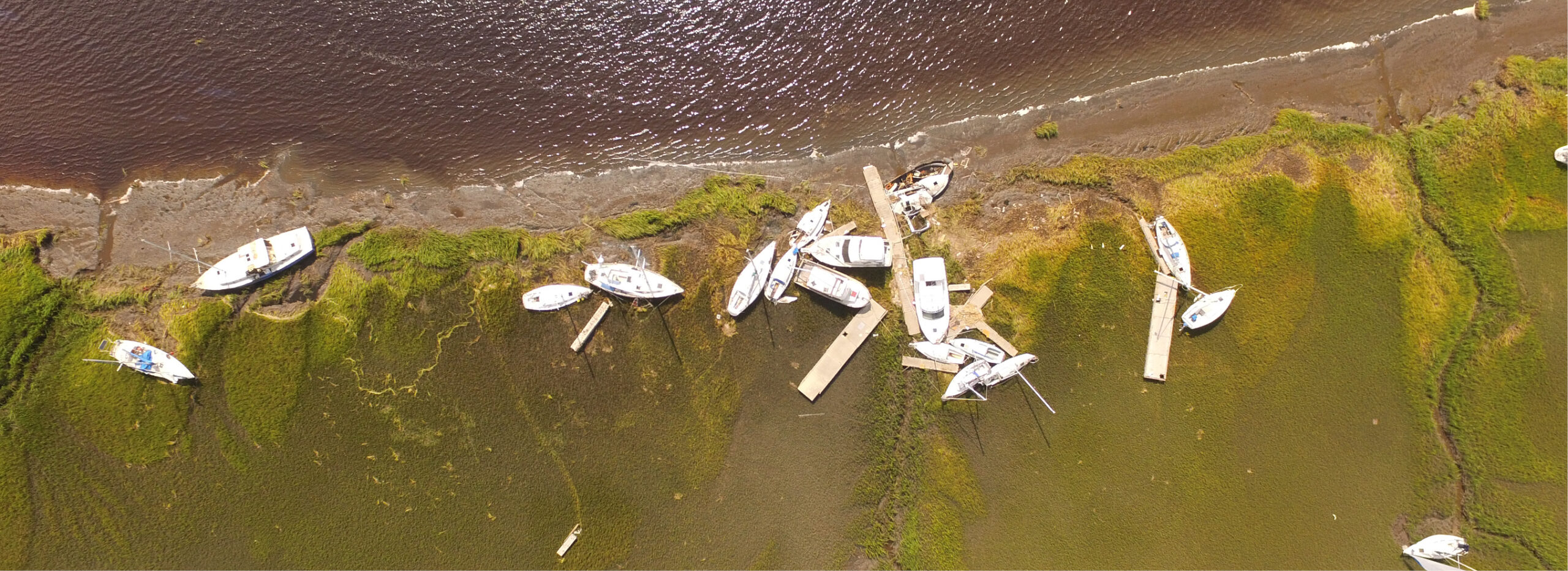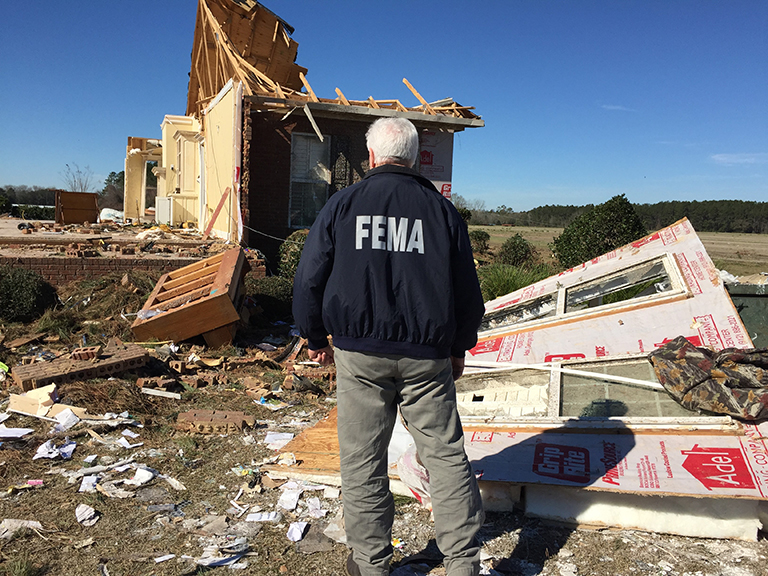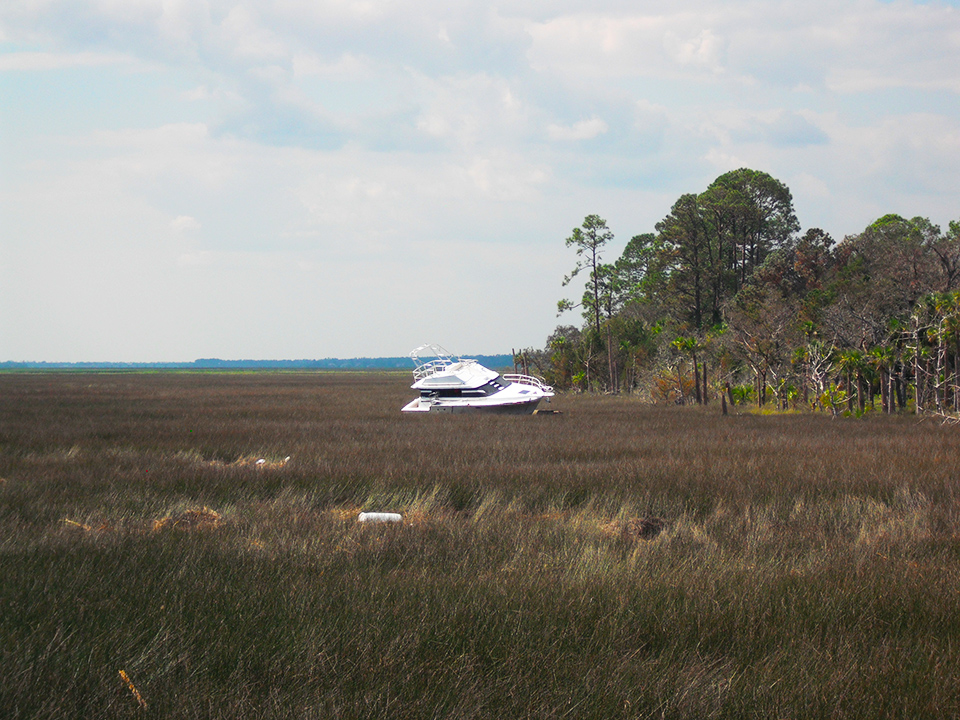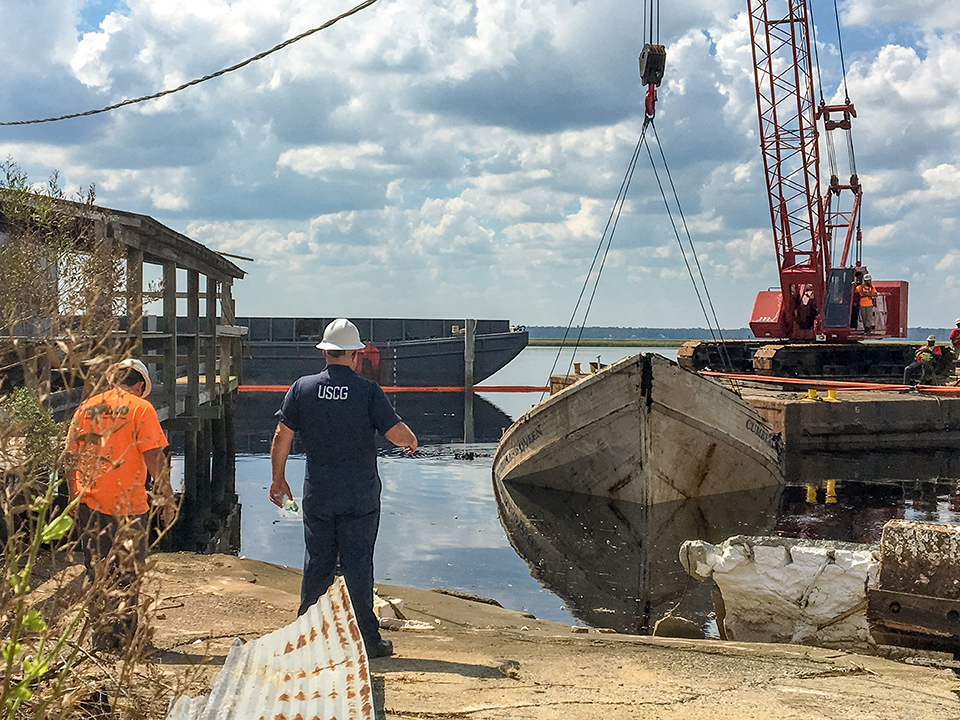
Every year, millions of people are affected by natural disasters, and 2017 has certainly been no exception. As of Oct. 6, there have been 15 weather and climate disaster events with losses exceeding $1 billion each across the U.S. this year.
The recovery process following events of this magnitude can be overwhelming, often leaving those affected wondering where to begin. As communities come together, however, they are able to restore more than just infrastructure – they are able to restore hope and rebuild communities that are more resilient than ever before.
Tornadoes Ravage Albany
On Jan. 2, severe storms, tornadoes and straight-line winds swept through Georgia, causing massive damage throughout Albany and Dougherty County. Less than three weeks later, the area was devastated by an EF3 tornado that ripped a 71-mile path through five Georgia counties. The EF3 was one of 79 tornadoes confirmed during an outbreak that tore through the Southeast on Jan. 21-23, making it the second largest January outbreak on record and one of this year’s billion-dollar disasters.

Only 26 tornadoes in the U.S. since 1995 have had a maximum width larger than the 1.25 mile-wide Albany tornado. According to an initial damage survey by the National Weather Service, 90 to 100 percent of trees in the tornado’s path were uprooted or snapped, not to mention the countless homes and buildings that were damaged or destroyed. Per the request of Gov. Nathan Deal, the president declared major disasters in the State of Georgia as a result of the two storm events, authorizing federal agencies like the Federal Emergency Management Agency to provide assistance to the impacted areas.
Under the Stafford Act, which governs FEMA’s Public Assistance Program, states and local governments overwhelmed by adverse events such as major disasters are eligible to receive federal assistance. Public Assistance applicants must follow specific guidelines to ensure the recovery work performed is eligible for reimbursement, as failure to do so could jeopardize this funding.
In February, the City of Albany and Dougherty County retained GMC to assist with recovery efforts to ensure compliance with FEMA guidelines, as well as applicable federal, state and local regulations.
Robert Ramsey leads GMC’s Albany office and has been spearheading the disaster recovery work. “There are really three major steps in the process. First is cleanup, where you get all of the debris out of the way and assess the damage. Second is cost recovery, which entails getting back the money lost as a result of the storm or event, and last is rebuilding.”
To be eligible for FEMA grant funding for debris removal operations, the process must be effectively monitored and documented from collection to disposal. GMC hired 45 local unemployed individuals and trained them on how to oversee the process in accordance with Public Assistance guidelines.
These monitors are responsible for verifying that debris being removed is located on public property and is a result of the storm, validating hazardous trees that need to be removed, estimating debris quantities, differentiating debris types, ensuring all debris is removed from trucks at debris management sites (DMS), filling out load tickets, reporting non-compliance and safety issues and documenting all monitoring activities.
Monitors take GPS-coordinated photos of debris that is being removed and placed into trucks to transport to a debris management site. Every truck must be certified to determine how many cubic yards of material it can hold. A monitor at the DMS then quantifies the load based on the truck’s capacity (i.e., the truck is filled to 60 percent capacity, or carrying x-number of cubic yards) and ensures all debris is removed from the truck at the site. Debris is stored at the DMS until a reduction contractor comes in to take it to another location for reuse, recycling or final disposal.
In Albany’s case, debris was ground up and reused as fuel wood by companies such as Georgia Pacific and Procter & Gamble. “As an engineering firm, we have a due diligence to protect the environment,” Ramsey said. “Taking wood that’s been destroyed by a disaster and making good use of it, that’s good for the environment.”
After wrapping up debris removal in mid-July, the team transitioned into cost recovery for the City. According to the Stafford Act, FEMA will reimburse 75 percent of eligible expenditures for specific activities related to disaster recovery. Documentation is required for all reclaimable expenses, which GMC has been working to compile with city officials. This may include first responders conducting emergency response and rescue operations, trucks and equipment used for debris removal, public works, clearing off roads and utilities to restore power, among other activities. For debris removal, sufficient documentation must be provided to show the path from collection to final disposal, in addition to debris types, quantities and claimed costs. Through these cost recovery efforts, the City of Albany will be eligible for an estimated $20 million in federal assistance.
Irma Strikes St. Marys
While recovery efforts continued in Albany, a series of new threats was emerging in the Atlantic. After causing catastrophic damage throughout the Caribbean and Florida, Hurricane Irma swept through parts of Georgia, including the coastal city of St. Marys. The storm ravaged the city’s waterfront, damaging and destroying docks, tossing boats onto the shore, sinking several others and inundating downtown with approximately 16 feet of water.

The gateway to Cumberland Island National Seashore, Georgia’s largest barrier island, St. Marys relies heavily on tourism to support its local economy. Without access to the docks and with many of the boats used to transport tourists to the attraction damaged or at the bottom of the river, tourism would be at a standstill.
City leaders wasted no time, immediately initiating cleanup and recovery efforts. GMC was retained by the City to assist with disaster recovery alongside FEMA, the Department of Natural Resources, National Park Service, U.S. Coast Guard and U.S. Army Corps of Engineers.
“Robert and his team understood the critical impact of this storm on our water-based economy and have worked vigorously to help us get back on our feet as quickly as possible,” City of St. Marys Mayor John Morrissey said.

Because of St. Marys’ coastal geography, debris removal presented unique challenges. Specific regulations had to be followed to remove sunken and damaged boats from the waterways and marsh. GMC’s Environmental team helped navigate the permitting and approval processes through the Coast Guard and Corps of Engineers to ensure vessels were removed properly and to obtain permits necessary for recovery work. This included permitting to repair and stabilize the Gilman Dock to provide a temporary docking solution to resume boating activity, including ferry service to Cumberland Island.
“Being able to help the City get to a point where they could regain their source of revenue is rewarding,” Ramsey said. “We’re here to create value for the citizens and leaders of St. Marys and to return a sense of normalcy as quickly as possible.”
The team is working with the City on cost recovery efforts to make sure they receive 100 percent of what they are eligible for from FEMA to continue rebuilding. In addition to full restoration of public docking and boating facilities, long term plans include resilience measures to mitigate damage from future natural disasters.
Rebuilding Stronger
Cleanup and recovery efforts are the first steps to restoring these cities to their pre-disaster conditions. More importantly, for the millions of people affected these are the first steps to returning to life as they know it. Rebuilding presents opportunities to create more resilient communities. By being proactive, city and community leaders can provide citizens with peace of mind knowing that measures are being taken to better protect them and their loved ones from future impacts of this caliber.